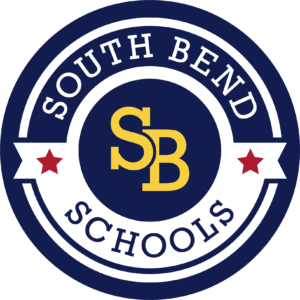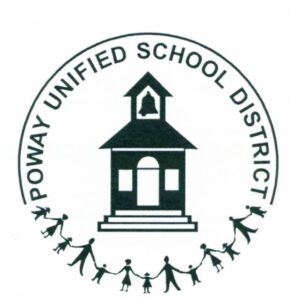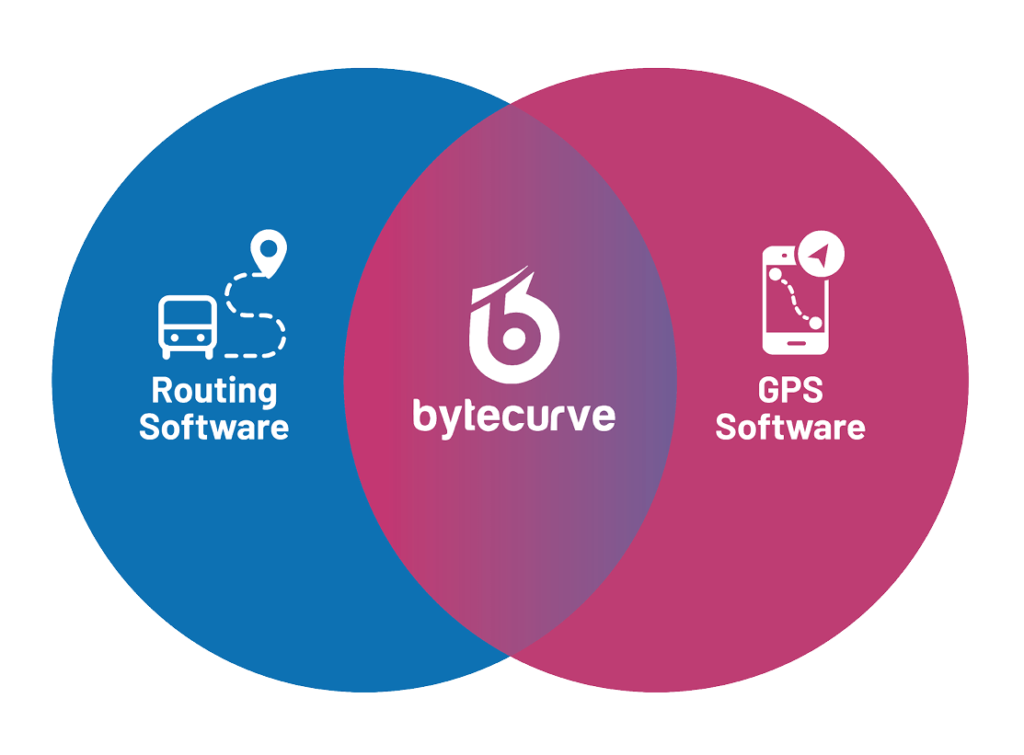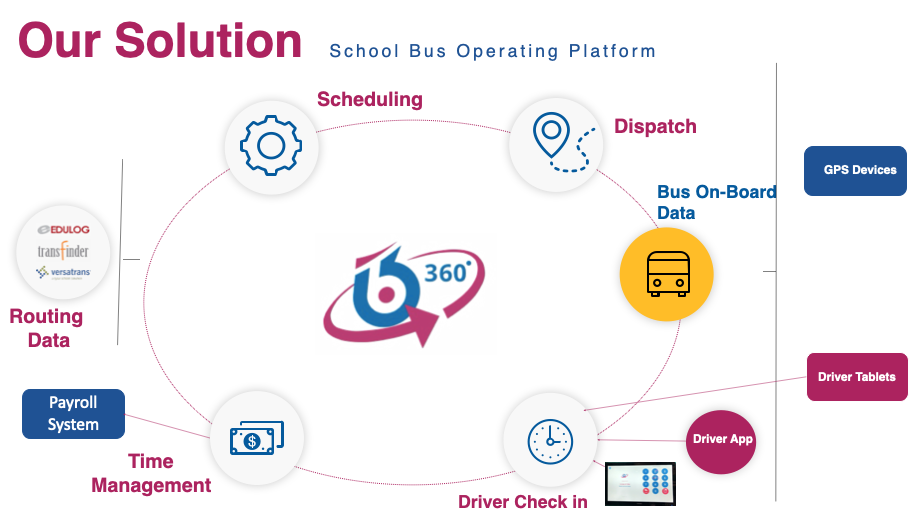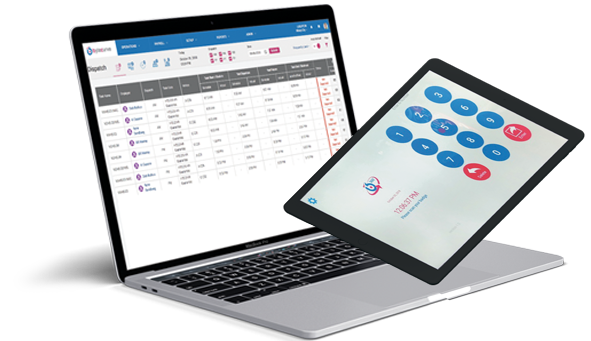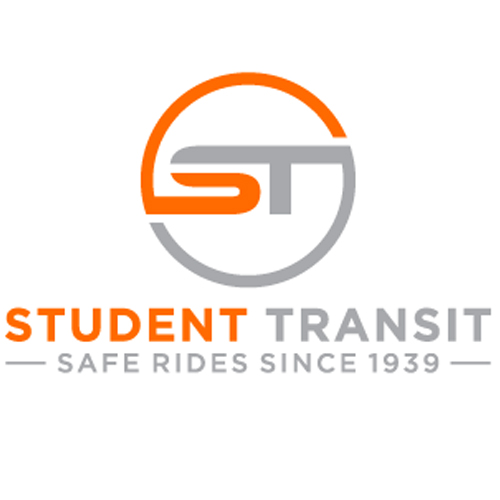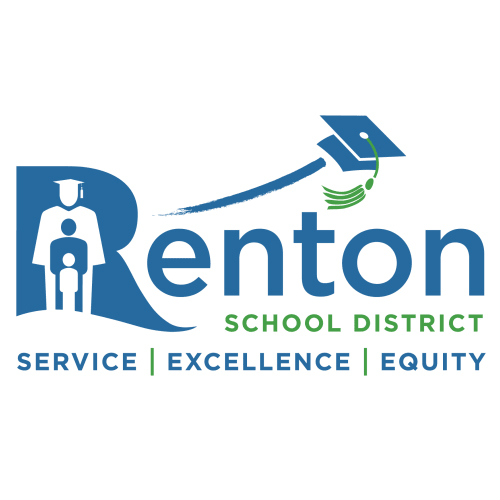BYTECURVE RESOURCES
Dispatch Software for Student Transportation: Safely and efficiently moving students between home and school
Our School Bus Operating platform arms your team with the information they need to improve decision making around safety, reducing costs, and being more efficient each day.
Trusted by dozens of public and private student transportation fleets to improve how they do business.
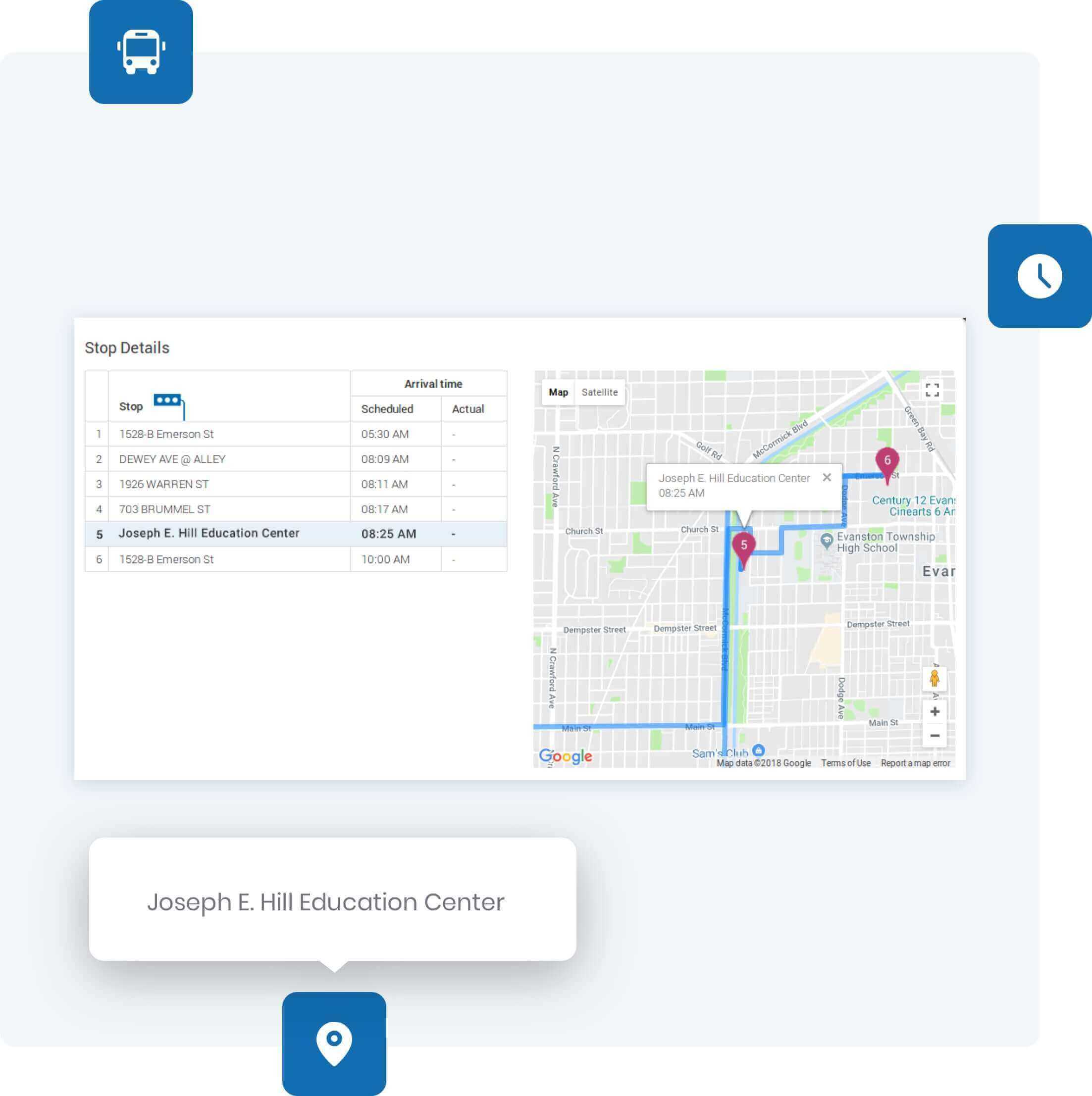
Trusted by the Finest Names in School Bus Transportation
Dispatch Software for Student Transportation
Dispatch software for student transportation is transforming the way school districts and transportation providers manage the complex logistics involved in safely and efficiently moving students between home and school.
Today’s student transportation landscape is marked by increasing expectations from parents, rising safety standards, driver shortages, and budget constraints.
As demand for improved efficiency, safety, and communication grows, dispatch software for student transportation has become an essential tool, helping transportation managers streamline operations, optimize routes, monitor vehicles in real-time, and ensure compliance with safety standards.
Dispatch software for student transportation technology empowers transportation managers to make data-driven decisions that enhance safety, reduce operational costs, and ensure smoother communication with both drivers and parents.
This article explores the essential features and benefits of dispatch software for student transportation, how it addresses current challenges, and the qualities that define the best solutions in the market.
The Growing Need for Dispatch Software in Student Transportation
Managing student transportation has always been challenging, but recent changes have made the need for effective dispatch software more critical than ever.
School districts are increasingly grappling with driver shortages, budget constraints, and the need for heightened safety measures.
Ensuring student safety and minimizing time on the road is paramount, while balancing limited resources can be challenging for transportation managers.
At the same time, parents expect real-time updates and transparent communication about bus arrival times and delays, adding pressure on districts to provide reliable and immediate information.
Dispatch software for student transportation addresses many of these challenges by automating and optimizing various tasks.
From route planning to real-time GPS tracking and parent notifications, dispatch systems streamline daily operations and offer actionable insights to improve efficiency.
These systems also reduce paperwork, cut administrative costs, and help drivers and staff maintain compliance with regulations, creating a more manageable workload and enhancing overall safety.
Bytecurve, for instance, delivers an entirely new scheduling and dispatch experience that will transform the way your team manages routes, tasks, and chronic driver shortages.
Trusted by dozens of districts across North America, more than 40,000 school buses rely on Bytecurve technology to improve their efficiency and safety.
By merging data from routing and GPS fleet tracking, Bytecurve users see new opportunities to enhance operations and improve safety.
Bytecurve provides the following capabilities and features:
- Create and maintain annual schedules
- Manage daily schedule changes
- Monitor daily dispatch with real-time status alerts
- Track on-time performance at stops and schools
- One-click guarantee and overtime calculations
- Produce time and attendance records for export to payroll system
- Single view into planned vs. actual route data
Key Features of Effective Dispatch Software
Effective dispatch software for student transportation should include a few core features that distinguish it from general-purpose fleet management solutions.
Real-time GPS tracking allows transportation departments to monitor the location and movement of all buses within their fleet, providing up-to-the-minute information on route progress.
This feature not only ensures buses stay on schedule but also enhances student safety by allowing dispatchers to respond to incidents immediately.
Geofencing technology, which creates virtual boundaries around specific locations like schools or bus stops, can trigger automated alerts when a bus enters or leaves a designated area, keeping both parents and administrators informed.
Route optimization is another critical feature, as it enables transportation managers to create the most efficient routes based on real-time data, student load, traffic conditions, and other variables.
By optimizing routes, dispatch software for student transportation can significantly reduce fuel consumption and minimize time students spend on the bus.
Many systems incorporate automatic scheduling and driver assignment capabilities, which take into account driver availability, qualifications, and other factors to ensure routes are adequately staffed.
This can be particularly helpful in managing driver shortages by making the best use of available resources.
Parental communication tools are essential for improving transparency and building trust with families.
Many dispatch solutions offer mobile apps or portals where parents can view real-time bus location updates, estimated arrival times, and receive notifications about delays or changes in the route.
This not only reassures parents but also reduces the number of phone calls to dispatch centers, saving time and resources.
Similarly, emergency alert features are crucial, allowing dispatchers to quickly communicate any incidents or emergencies to parents and school officials, ensuring a prompt and coordinated response.
Another important feature is performance monitoring, which allows administrators to assess driver behavior and fleet performance over time.
By tracking metrics such as speed, braking, fuel efficiency, and idle time, dispatch software can help identify areas for improvement and provide data-driven insights for driver training programs.
Maintenance tracking is often integrated, enabling districts to monitor vehicle health and schedule preventative maintenance, reducing the risk of breakdowns and extending the lifespan of the fleet.
Benefits of Implementing Dispatch Software for Student Transportation
Implementing dispatch software for student transportation offers numerous advantages for school districts, transportation providers, and the families they serve.
The automation of route planning, driver assignment, and real-time tracking reduces administrative burdens and improves operational efficiency.
By using software to optimize routes, districts can reduce fuel costs, minimize wear on vehicles, and lower emissions, contributing to both financial savings and environmental sustainability.
One of the most significant benefits of dispatch software is the enhancement of student safety. Real-time GPS tracking allows dispatchers to respond immediately to incidents, while geofencing and emergency alerts ensure that parents and school officials are notified of any issues.
This real-time visibility also allows transportation departments to track when and where students are picked up and dropped off, ensuring that they are always accounted for.
Dispatch software for student transportation also fosters stronger communication between parents and transportation departments, increasing transparency and building trust.
Parents can receive instant updates on their child’s bus status, reducing anxiety and giving them peace of mind.
The availability of a parent portal or mobile app means that families can access this information directly, saving dispatch staff from fielding inquiries and allowing them to focus on other essential tasks.
Moreover, dispatch software for student transportation helps transportation managers make better use of limited resources, which is especially valuable in times of driver shortages.
Automated scheduling and route optimization can reduce the need for additional drivers by making routes as efficient as possible.
Performance monitoring can also support driver retention by identifying and addressing areas where additional training or support may be needed.
These improvements not only streamline operations but also contribute to a positive work environment, helping to retain staff in a competitive labor market.
Bytecurve 360 is, to date, the only technology solution provider capable of connecting these two disparate systems into a seamless interface that makes them greater than the sum of their parts.
The software trusted by dozens of school districts like Renton as well as many private contractors delivers many benefits, including:
- Better driver communications so that employees can check in/out remotely, view their schedules and respond in real time to route changes
- Easier payroll management so that fleet managers no longer have to manually calculate employee guarantees/contracts and overtime and the ability to consolidate payroll for drivers, aides, subs, mechanics, and support staff.
- Improved management of daily operations, including assigning/reassigning drivers and vehicles, using real-time integration with GPS and routing systems. This allows all routes and runs to be easily reconfigured when a bus breaks down or a driver can’t come in.

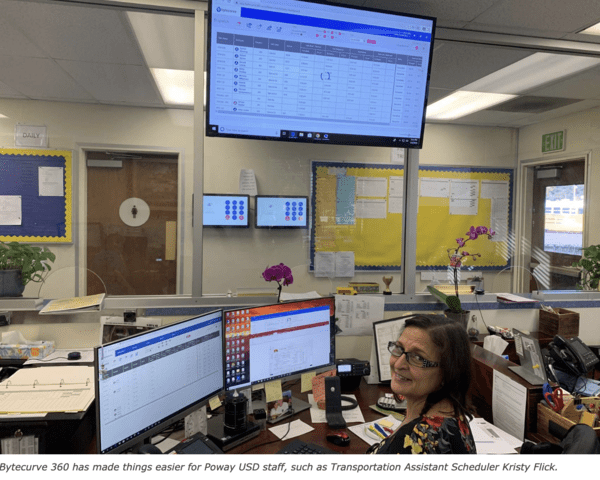
Bytecurve360 delivers a transformative operational experience.
Some of the most essential features include:
- Better Driver communications so that employees can check in/out remotely, view their schedules and receive messages on their smartphones.
- Easier payroll management so that you no longer have to manually calculate employee guarantees/contracts and overtime.
- Simpler management of daily operations, including assigning/reassigning drivers and vehicles, using real-time integration with GPS and routing systems. This allows all stops to be easily be rerouted when a bus breaks down or a driver can’t come in.
Student transportation is a complex, multi-layered task that involves not only moving children safely from home to school but also doing so in a way that meets high standards for efficiency, accountability, and responsiveness.
As transportation departments deal with budget constraints, limited resources, and increasingly rigorous safety standards, dispatch software has become an essential tool to help manage these challenges.
Safety remains a top concern for student transportation providers, as incidents involving school buses can be devastating.
Dispatch software allows administrators to maintain real-time visibility of every vehicle, ensuring that buses adhere to designated routes and schedules.
In the event of an emergency, dispatchers can quickly locate and assist the bus, minimizing delays and improving response times.
Additionally, with real-time GPS tracking and automated notifications, dispatch software can provide parents with peace of mind by allowing them to see their child’s location and estimated arrival time.
Budget constraints and driver shortages are additional hurdles. Effective dispatch software addresses these by optimizing routes, reducing fuel costs, and managing driver schedules more efficiently.
Automation also reduces paperwork and administrative tasks, freeing up time for dispatchers and allowing districts to do more with fewer resources.
By integrating features like automated scheduling, route optimization, and performance monitoring, the software allows districts to maximize their existing assets, even in the face of workforce limitations.
Essential Features of Student Transportation Dispatch Software
The best dispatch software for student transportation incorporates features designed to streamline operations, enhance safety, and improve communication between all parties involved.
One critical component is real-time GPS tracking, which allows dispatchers to monitor the exact location of every bus in the fleet.
This visibility enables dispatchers to quickly respond to delays, detours, and emergencies, ensuring that students arrive at their destinations safely and on time.
GPS tracking also improves accountability, as administrators can verify that drivers are following assigned routes and adhering to schedule requirements.
Another key feature is route optimization, which helps reduce travel time, fuel costs, and wear and tear on vehicles.
By analyzing traffic patterns, student pick-up locations, and other variables, route optimization tools create the most efficient routes possible.
This not only reduces operational costs but also minimizes the amount of time students spend on the bus, contributing to a safer and more comfortable journey.
Automated scheduling and driver assignment are equally valuable features, allowing transportation managers to assign routes based on driver availability, qualifications, and preferences.
Automated scheduling reduces the risk of human error, ensuring that routes are always properly staffed and aligned with district policies.
Additionally, these features enable districts to efficiently manage driver shortages by making the best use of available personnel.
Parental communication tools are essential for fostering transparency and building trust. Many dispatch solutions offer mobile applications or web portals where parents can view real-time updates on their child’s bus location and receive notifications about delays or schedule changes.
This feature significantly reduces the number of inquiries made to dispatch centers, allowing staff to focus on core responsibilities while keeping parents informed.
Safety alerts and geofencing capabilities further enhance the functionality of dispatch software by notifying dispatchers and parents when a bus enters or leaves a designated zone, such as a school or pickup area.
In addition to improving safety, geofencing can help verify adherence to routes and schedules, further increasing accountability and ensuring compliance with school policies.
Performance monitoring and data analytics also play a crucial role. By tracking metrics like speed, braking, idle time, and fuel efficiency, dispatch software helps administrators identify areas for improvement and supports data-driven decision-making.
Maintenance tracking is often integrated, allowing transportation departments to monitor vehicle health and schedule preventative maintenance.
This minimizes unexpected breakdowns, improves safety, and helps extend the lifespan of the fleet.
The Qualities of the Best Dispatch Software for Student Transportation
The best dispatch software for student transportation shares certain qualities that set it apart from basic fleet management solutions.
First and foremost, it should be intuitive and user-friendly, allowing both administrators and drivers to quickly access and utilize the system without extensive training.
An intuitive interface makes it easier for dispatchers to manage routes, schedules, and communications, while also enabling drivers to easily log into the system, receive updates, and access route details.
Reliability is another crucial quality, as the software must be dependable even during high-traffic times or in challenging weather conditions.
The best dispatch solutions use robust infrastructure that supports seamless real-time tracking, even in remote or congested areas.
Reliable dispatch software should also be able to operate on multiple devices, including desktops, tablets, and mobile phones, providing flexibility for transportation managers who need to access the system while on the go.
Customizability is another quality that sets top-tier dispatch software apart.
Each school district has unique needs based on its student population, geographical area, and operational requirements, so the best dispatch solutions offer flexible features and settings that can be tailored to these specific demands.
Customizable settings allow transportation departments to adjust routing parameters, communication protocols, and reporting functions, ensuring that the software aligns with their goals.
The ability to integrate with existing systems is essential. School districts often use a variety of platforms for student information, attendance, and fleet management, so dispatch software that can seamlessly integrate with these systems offers significant value.
Integration reduces the need for redundant data entry and allows transportation managers to access a comprehensive view of their operations, combining information from multiple sources in one place.
Data security and compliance are paramount, particularly for student transportation software that handles sensitive information about students and their locations.
The best dispatch solutions use advanced encryption methods, secure data storage, and strict access controls to protect data privacy. They also comply with regulations like FERPA (Family Educational Rights and Privacy Act), ensuring that student information remains confidential and secure.
Scalability is another defining quality of top-tier dispatch software.
As school districts grow or adjust their operations, their transportation needs may change. Scalable dispatch software can accommodate an increasing number of students, routes, and drivers without sacrificing performance.
This adaptability ensures that districts can continue using the same software as they expand, rather than needing to transition to a new system.
The best dispatch software for student transportation also provides comprehensive support and training resources.
Transportation departments may encounter technical issues, updates, or need assistance in maximizing the software’s features.
A strong support system ensures that users can resolve issues quickly and continue operating smoothly.
Additionally, training resources and documentation help new staff members learn the system, ensuring a consistent level of expertise and understanding across the team.
Finally, the most effective dispatch software for student transportation emphasizes data-driven decision-making.
Built-in analytics and reporting tools provide actionable insights on fleet performance, fuel consumption, route efficiency, and driver behavior.
By using these data analytics, transportation managers can identify trends, pinpoint areas for improvement, and make informed adjustments to their operations, ultimately leading to a safer and more efficient transportation system.
Many, if not most, larger school districts and private school bus fleets rely on GPS Fleet Tracking today, as well as routing software, to improve their operations and deliver greater student safety.
But many districts are still unaware of a new emerging technology designed to connect the two previously independent platforms into a 360-degree view of operations to empower dispatchers, payroll technicians, and fleet directors to capture even better operational efficiencies and uncover new ways to increase safety.
Bytecurve360, developed and supported by a team with more than 100 years of combined student transportation experience, is growing in popularity among fleets that leverage both routing and GPS Fleet tracking thanks to its ability to improve driver management, better control costs associated with payroll, and deliver improved services to schools and families.
Not designed to replace either system, Bytecurve360 aims to connect dots that were previously constrained by technology silos into a more comprehensive perspective of student transportation management.
Featuring a driver communication app, a payroll tool that can be leveraged in the garage via desktop or on-the-go via the driver app DriveOn as well as dispatch features designed by a team with years of experience managing complex and dynamic school bus fleets, Bytecurve360 delivers a transformative operational experience.
“It’s helped us provide a new level of command and control that allows us to be ahead of issues instead of responding to them,” said Marty Klukas, General Manager, Student Transit.
Some of the most essential features include:
- Better driver communications so that employees can check in/out remotely, view their schedules, and receive messages on their smartphones.
- Easier payroll management so that you no longer have to manually calculate employee guarantees/contracts and overtime.
- Easier management of daily operations, including assigning/reassigning drivers and vehicles, using real-time integration with GPS and routing systems. This allows all stops to easily be rerouted when a bus breaks down or a driver can’t come in.
These features are designed to deliver these significant operational improvements:
- Spend less time managing drivers
- Fewer complaints from parents
- Less payroll mistakes
Conclusion
Dispatch software for student transportation plays an essential role in modernizing and optimizing the logistics involved in moving students safely between home and school.
With a broad range of features such as real-time GPS tracking, route optimization, automated scheduling, and parental communication tools, these systems simplify daily operations while enhancing safety, accountability, and transparency.
As school districts navigate the challenges of limited budgets and driver shortages, dispatch software provides a valuable solution that maximizes resources and improves service quality.
The best dispatch software for student transportation stands out by offering a user-friendly, reliable, and customizable experience that meets the specific needs of each district.
Essential qualities include the ability to integrate with existing systems, provide scalable solutions, and offer high data security standards.
With comprehensive support, training, and data analytics, these solutions empower transportation managers to make data-informed decisions that lead to more efficient, safer, and transparent operations.
By investing in the right dispatch software, school districts can optimize their transportation services, save on operational costs, and build trust with families, providing peace of mind to parents and ensuring that students arrive at school and back home safely and on time, every time.

Integrated Student Transportation Software
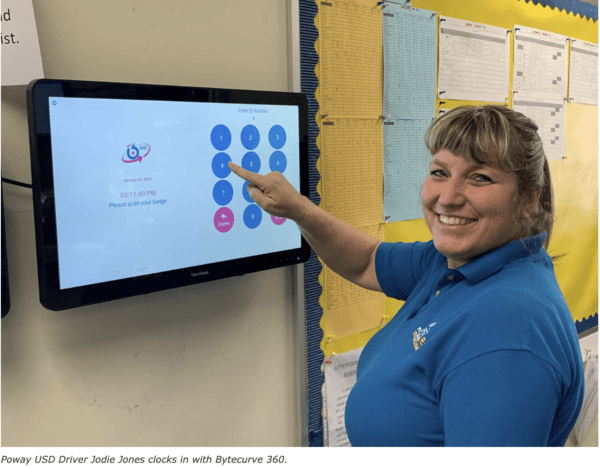
If you are in the market for a school bus driver scheduling software, here’s what to look out for
- The application should feature a user-friendly design to enable administrators, drivers, and parents to understand and navigate the system. It should be cloud-based and be supported by U.S.-based support team who appreciate the unique demanding environment of a school bus fleet.
- The platform should include ongoing and comprehensive training and support for all users to guarantee they’re comfortable with the tool and can use it effectively. Bytecurve features ongoing support from our team of school bus operations experts.
- The school bus driver scheduling software platform you eventually select should commit to continuous updates and maintenance to ensure it remains current and devoid of bugs or glitches. Bytecurve is founded by innovators who will never stop improving the platform based on the needs and wants of their customers and school bus fleet operators.
- The app should be flexible and customizable to tailor it to the unique needs of each school or district. Bytecurve will work with each district or contract to build their tailored solution that meets their unique requirements.
- The software should be capable of integrating with other related tools like student information systems to guarantee accurate and up-to-date data is being used to create and manage driver schedules. Bytecurve has integrations with all of the major routing and GPS fleet tracking solutions so that virtually any school bus fleet can enjoy the benefits of the transformative technology.


Secure
Only authorized employees will be able to access DriveOn based on a customer specific access code. This code can be turned off as needed by an authorized administrator.

User friendly
DriveOn is easy to use with a simple, smart interface.
Available on both iOS and Google Play stores.



